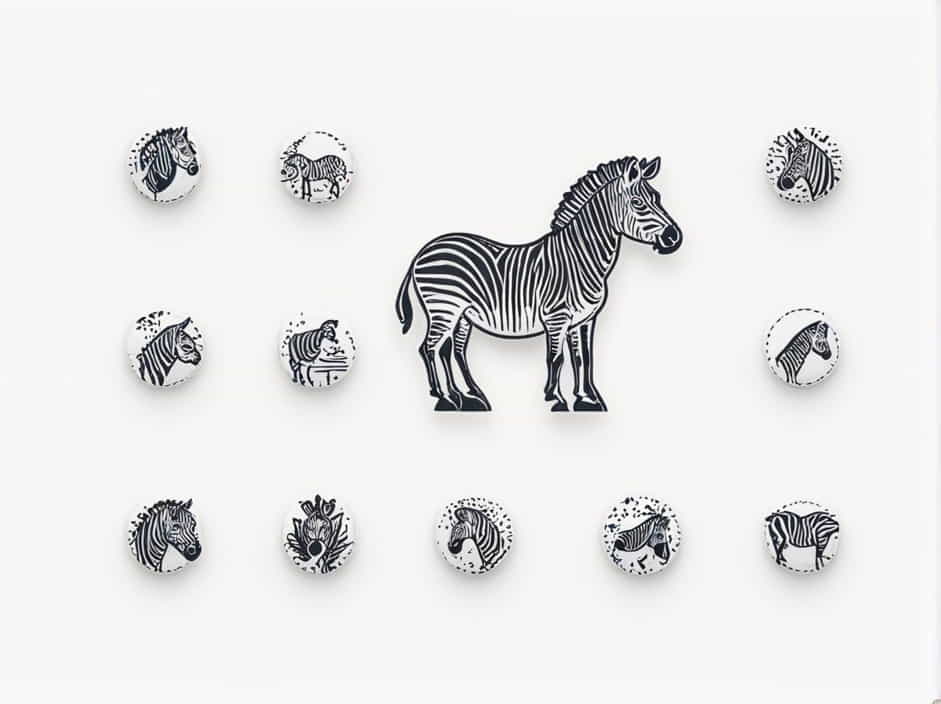Zebras are one of the most recognizable animals in the world, thanks to their striking black-and-white stripes. Although they are closely related to horses and donkeys, humans have never successfully domesticated zebras like their equine relatives. Many have tried, but zebras remain wild and unpredictable.
So, why are zebras so hard to domesticate? In this topic, we’ll explore the biological, behavioral, and environmental reasons why zebras resist domestication, as well as historical attempts to tame them.
What Does It Mean to Domesticate an Animal?
Before diving into why zebras are difficult to domesticate, it’s important to understand what domestication means. Domestication is the process of selectively breeding a species over generations to develop traits that make them useful to humans. Domesticated animals, like dogs, cows, and horses, are bred to be docile, cooperative, and comfortable living alongside humans.
Domestication is different from taming, which is simply training an individual wild animal to tolerate human presence. A tamed animal may still have wild instincts, while a domesticated species has been genetically adapted over time.
1. Zebras Have a Strong Fight-or-Flight Instinct
One of the main reasons zebras resist domestication is their strong survival instincts. Unlike horses, which evolved in more protected environments, zebras developed in the predator-rich landscapes of Africa. They are constantly under threat from lions, hyenas, and other predators.
Because of this, zebras have a powerful fight-or-flight response, making them highly skittish and difficult to control. Instead of trusting humans, they often react with aggression or attempt to escape when approached.
2. Zebras Are Naturally Aggressive
Unlike horses, which have been bred for thousands of years to be friendly and cooperative, zebras have remained wild. They are known for their aggressive and unpredictable behavior.
- They bite – Zebras have incredibly strong bites and will use them against threats, including humans.
- They kick – A zebra’s kick is powerful enough to break a lion’s jaw, making them extremely dangerous.
- They fight among themselves – Zebras often engage in violent battles with each other, unlike horses, which have more structured social hierarchies.
This aggressive nature makes training and handling zebras much more dangerous than working with horses or donkeys.
3. Zebras Lack a Strong Hierarchical Social Structure
Many domesticated animals, such as horses, cows, and dogs, have a clear social hierarchy that humans can exploit to establish dominance. Horses, for example, live in herds with a leader, making it easier for humans to take on a leadership role.
Zebras, on the other hand, have looser social structures and do not follow a single leader as horses do. This means they don’t respond well to authority and resist being trained in the way that domesticated animals do.
4. Zebras Are More Easily Stressed
Another major challenge with zebras is their high sensitivity to stress. Even if you manage to train a zebra for short periods, they tend to become overwhelmed quickly. Unlike horses, which can adapt to human interaction over time, zebras remain nervous and reactive.
In captivity, they often suffer from stress-related health problems, making them less suitable for long-term domestication.
5. Zebras Are Not Built for Heavy Loads
Unlike horses and donkeys, which have been bred to carry heavy loads and pull carts, zebras are not physically built for burden. Their backs are not as strong as those of horses, and their body shape is not ideal for saddles or harnesses.
Attempts to use zebras as work animals have largely failed because they struggle with carrying weight for long periods.
6. Their Habitat Makes Domestication Difficult
Zebras evolved in the harsh environments of Africa, where food and water are often scarce. This has made them highly adaptable to survival in the wild, but also more independent and resistant to human control.
In contrast, horses evolved in environments where they had easier access to food and shelter, making them more reliant on human care when domesticated.
Historical Attempts to Domesticate Zebras
Despite these challenges, there have been several attempts to domesticate zebras throughout history.
1. The European Colonists in Africa
In the 19th and early 20th centuries, European colonists in Africa attempted to use zebras as work animals. Some believed that zebras, being native to Africa, would be more resistant to local diseases like African sleeping sickness, which often killed imported horses.
However, most of these efforts failed due to the zebra’s aggressive and unpredictable nature.
2. Lord Walter Rothschild’s Trained Zebras
One of the most famous attempts to train zebras came from Lord Walter Rothschild, a British zoologist. He successfully trained a small team of zebras to pull a carriage in London, but this was more of a publicity stunt than a true example of domestication. His zebras remained wild at heart and were never used on a larger scale.
3. Zebra-Horse Hybrids (Zebroids)
Some scientists and breeders have attempted to create zebra-horse hybrids, called zebroids (or zorses, zedonks, and zonkeys). These hybrids inherit some of the zebra’s toughness but are generally more trainable. However, they often retain the zebra’s unpredictable behavior, making them less reliable than domesticated horses or donkeys.
Can Zebras Ever Be Domesticated?
While individual zebras can be tamed to some extent, fully domesticating the species would require thousands of years of selective breeding, just like what happened with horses, dogs, and cattle. Given the challenges associated with breeding and training zebras, it is unlikely that they will ever become domesticated like horses.
Zebras are difficult to domesticate due to their strong survival instincts, aggressive nature, lack of social hierarchy, stress sensitivity, and physical limitations. While there have been historical attempts to train zebras, none have resulted in full domestication.
Unlike horses and donkeys, which have been selectively bred for human use over thousands of years, zebras have remained wild and resistant to control. While they may be fascinating and beautiful animals, they are best admired from a distance rather than as domesticated companions.
